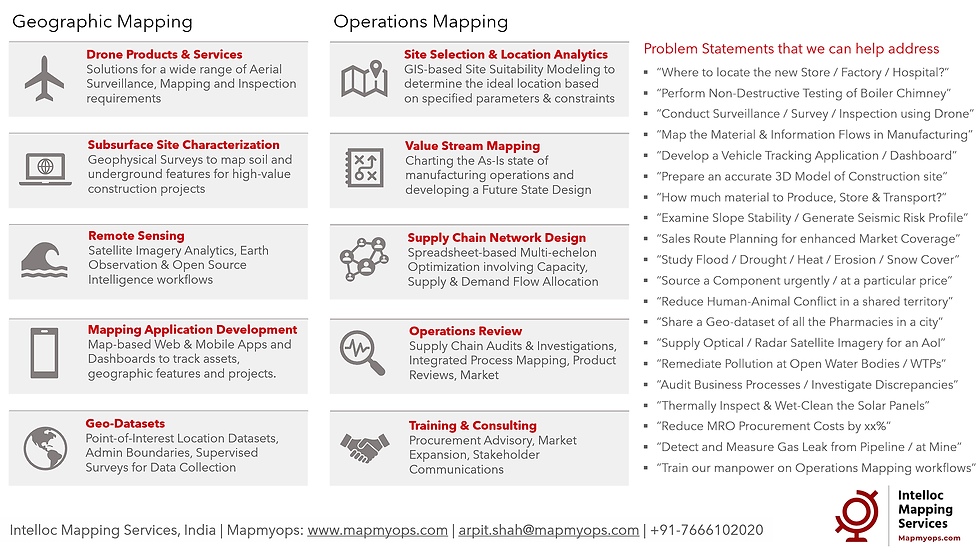
INTRODUCTION
It is remarkable how one instinctively tends to know just the right amount of effort required to stir a hot beverage in order to dissolve the soluble ingredients while keeping the drink sufficiently warm.
While doing so, the wavy patterns that form on the surface are entrancing - volatile on the edges and frothier towards the shallow centre, the eye of the storm. Dip your finger in here or a bucket of swirling water to feel the suction drawing you to the depths.
BACKGROUND
Ocean Currents are complex, scaled up versions of the same phenomenon, stirred by Mother Nature. Influenced by gravity, water density, winds and the earth's rotation, these 'gyres' play a vital role in regulating the water temperature, salinity & nutrient flow across the planet.

Physical Asset Inspection is a fundamental activity under the purview of functional specialists in Maintenance and Safety. Routine Inspections help in managing the reliability of the equipment by prolonging its life, detecting deterioration, preventing theft and promoting safety & well-being of manpower & the environment. While organizations are expected to take proactive measures towards the same, they are often compelled to do so by the regulatory industry or government bodies.
This demonstration in this post dwells on the inspection of oil wells at offshore locations. At offshore sites, petroleum is extracted from the holes in the seabed by either exploratory vessels called drillships or from stationary oil platforms.

Remotely operated underwater vehicles (ROUVs) are deployed from these on-surface vessels and platforms to inspect the Oil Well equipment underneath in a reliable & safe manner and at depths beyond the reach of human divers.

It is easy to imagine the significant risks involved in offshore oil extraction - remote locations out in the high seas, flammable fuel handling and transfer, choppy waters and turbulent weather - these would make for hostile operating conditions for both manpower and equipment which would necessitate stringent inspection protocols.
Having recently toured an operational Coal Mine, I was acquainted to the sensitivities involved in extracting natural resources from below the Earth's surface. Strict guidelines are set by the mining regulatory body, the extraction operations are closely monitored, and safety is given the highest priority - their management took a keen interest in our geophysical survey solutions which would help them to characterize the subsurface in a non-invasive manner allowing for more efficient coal extraction process with a reduced threat to manpower, assets & the environment.
DEMONSTRATION - OCEAN CURRENT MAPPING FOR OIL WELL INSPECTION
When I came across the Ocean Current Mapping tutorial on Esri's Learn ArcGIS platform, one more high-utility workflow amidst the plethora of practical applications that an industrial-grade geospatial analytics platform can perform, it gave me a sneak peek into the intricacies involved in Deep Sea Oil Extraction and related Asset Maintenance, something which I have shared with you through the demonstration video enclosed below which involves-
loading the data for Oil Well Infrastructure at offshore locations in the Gulf of Mexico,
loading Hybrid Coordinate Ocean Model (HYCOM) - Ocean Prediction System data
using advanced geospatial analytics to determine the suitable time-windows for safe passage of ROUVs for asset maintenance purposes factoring in the prevailing ocean current velocity
visualizing the output in 3D for better interpretation
Video 1: Demonstration for predicting Ocean Currents to plan remote Well inspection using Esri ArcGIS Pro
Interesting isn't it? If yes, you may enjoy reading another industry-specific GIS use case - Mapping Obstacles on Flight Path.
ABOUT US
Intelloc Mapping Services | Mapmyops.com is based in Kolkata, India and engages in providing Mapping solutions that can be integrated with Operations Planning, Design and Audit workflows. These include but are not limited to - Drone Services, Subsurface Mapping Services, Location Analytics & App Development, Supply Chain Services, Remote Sensing Services and Wastewater Treatment. The services can be rendered pan-India, some even globally, and will aid an organization to meet its stated objectives especially pertaining to Operational Excellence, Cost Reduction, Sustainability and Growth.
Broadly, our area of expertise can be split into two categories - Geographic Mapping and Operations Mapping. The Infographic below highlights our capabilities.

Our 'Mapping for Operations'-themed workflow demonstrations can be accessed from the firm's Website / YouTube Channel and an overview can be obtained from this flyer. Happy to address queries and respond to documented requirements. Custom Demonstration, Training & Trials are facilitated only on a paid-basis. Looking forward to being of service.
Regards,

